
Brian Beck
The first half of this report addressed the challenges business-to-business companies face in meeting Amazon.com-era ease of online purchasing for their customers—and, at the same time, providing the online content and features that business buyers need to do their jobs.
Here are three examples of companies that get that balance right.
A superbly executed B2B e-commerce site is operated by manufacturer Illumina Inc., a global leader in genomics and biotechnology products with more than $3 billion in annual sales.
Accuracy in product descriptions is critical for Illumina and its customers. Its B2B e-commerce effort is one of the best in the marketplace today. The company offers an e-commerce experience that accommodates the various workflows of its different buyers, while also capturing the best practices of B2C.
Illumina’s website is grounded in a customer-first approach. The company started the e-commerce journey by interviewing its customers to uncover how they researched, discovered, and purchased products. Management then used this information to develop an online experience that both accommodates research and purchasing workflows, and meets rigorous standards for B2C-like expectations for search, navigation, and checkout. For example, take a look at the functionality of its online shopping cart:
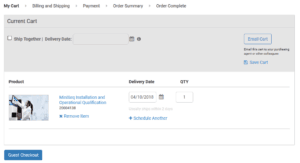
The key features here allow purchasing managers to:
- Schedule product shipments
- Ship simultaneous, but separate orders
- Save shopping carts for later
- Email the cart to a colleague
For Illumina, the procurement department making the purchase is typically not the person using the product. The features demonstrated above make it easier for buyers to ensure they are getting the right product at the right time. Note the clearly labeled checkout steps, display of cart contents, and shipping information within the cart. This is one of many examples that demonstrate how Illumina has both accommodated B2B workflows, while also following B2C best practices.
Epson America Inc. provides a good example of how a manufacturer presents clear navigation and ease of finding products through a unique application of its site search. You might know Epson for making value-priced printers for your home office, but this global giant actually does a lot more than that. A good portion of its business is B2B, including high-end, industrial printers, professional imaging machines, and even robots.
The first thing you may notice when you go to their website is the extremely well-organized navigation:

The navigation makes it easy for any type of customer to find what they need. If a customer is unsure what products she needs, she can click “Industries” and see products based on the type of work she does.
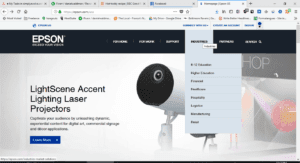
If a customer already knows what he wants—printer ink, for instance—he can click a link for an Ink Finder to search by printer series, printer model, model number or ink code. The same information can be accessed from every printer product page.
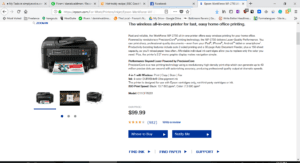
By saving a customer clicks, Epson has made it easy to find the right printer ink to my printer. Just the ease and speed alone can help keep the customer coming back.
Steris Corp. is a provider of infection prevention products, primarily serving healthcare, pharmaceutical and medical device customers. It sells a wide range of medical products, ranging from equipment for operating rooms, to sterilization systems, to endoscope cleaning chemicals. In fact, the company sells such a large range of products that it would be easy to get lost on its site if you don’t know what you are looking for.
As noted above, in the medical field it is essential to provide accurate information in order to ensure patient safety. This includes meeting stringent, government-mandated safety regulations. Steris must ensure that buyers make purchases that are compatible with the equipment being utilized. To address this requirement, Steris presents each product with tabbed information that includes compatible and related products—as shown below:
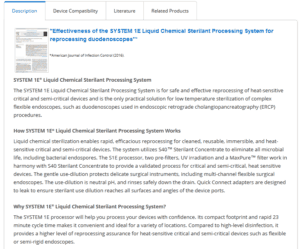
It is common for large medical systems and hospitals to maintain a procurement department that manages the purchasing process. But these procurement professionals are not the scientists or health care professionals that are researching or utilizing the product. Steris provides deep information that helps to educate the buyer (the procurement pro), giving her the confidence in making the correct purchase.
Also notable is the depth to which Steris goes to ensure the product information is clear and accurate. The company clearly presents parts and components that match to specific equipment, ensuring the buyer makes the right purchase, as shown here:
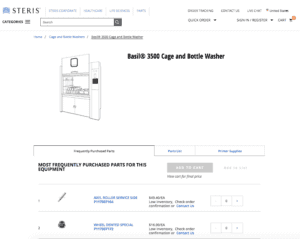
Lessons Learned
What these three examples show is how B2B can both draw on design and process considerations from B2C e-commerce, but also how B2B firms need to forge their own way to accommodate the unique needs of its buyers. All of these factors have an impact on conversions, and ultimately on the financial bottom line.
Brian Beck is senior vice president of e-commerce and omnichannel strategy at Guidance, an e-commerce design and development agency. Follow him on Twitter @briansalaubeck and on LinkedIn.
Favorite